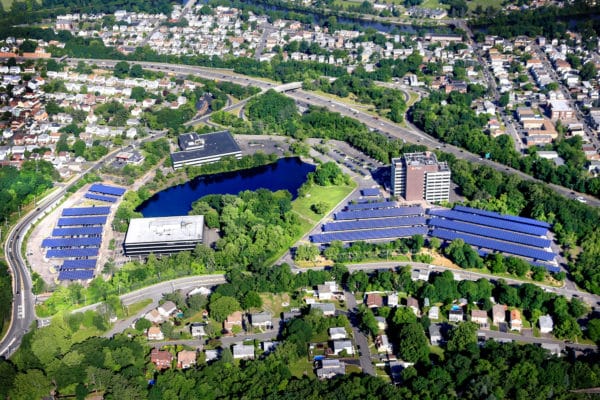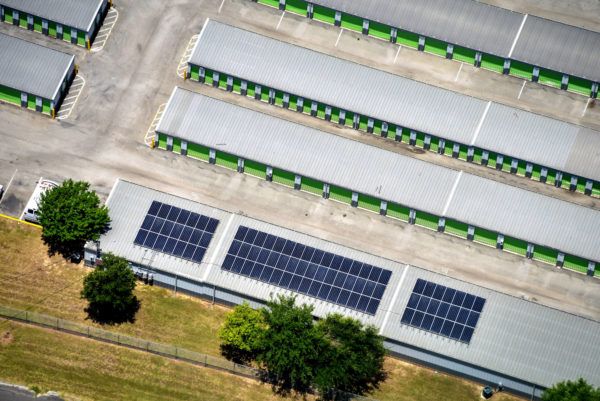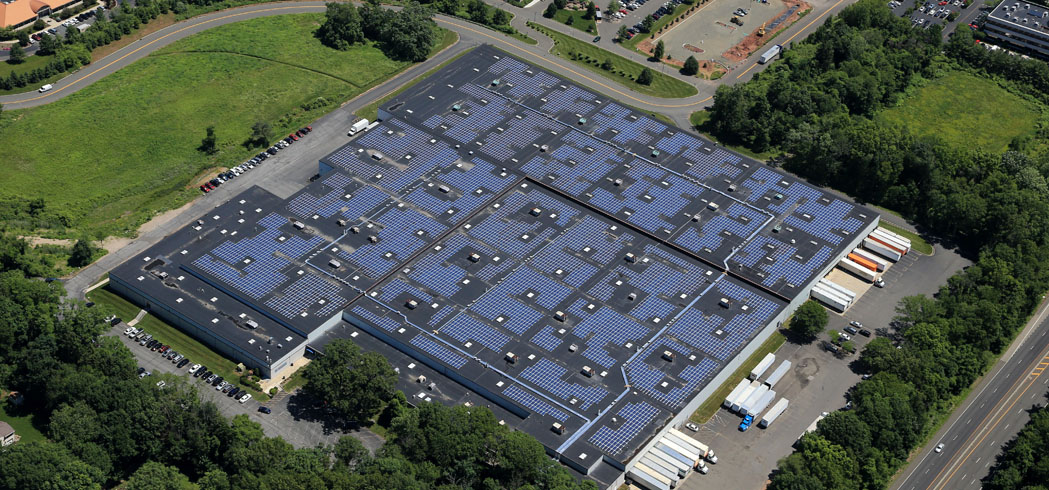You may think commercial solar is only for large, Fortune 500 companies with enough resources to afford millions of dollars in capital expenditures.
The good news is that this is not at all the case. Middle-market companies can also benefit from solar, and are increasingly expected to do so by large companies seeking to reduce the environmental impact of their supply chains.

Mid-scale companies not only stand to better position themselves with their customers, but also drive significant savings or tax benefits by going solar. Many have done so already: The amount of solar capacity installed across the United States has grown tenfold in the past decade, and some people are already calling the 2020s “the solar decade.”
Even so, many attractive opportunities remain. In the U.S., solar energy installations can help roughly 70% of businesses reduce operating costs and meet environmental goals in the 2020s. Here are a few simple steps you can use to evaluate ROI and begin developing a successful solar energy installation for your business.
Evaluate your property for solar
First, you should own the property or have control of the roof. If you lease, a landlord-tenant deal can be pursued, but would require additional coordination. Your rooftop should have ample room (typically greater than 50,000 square feet) with direct sunlight for an effective solar energy system to be installed. Most commonly, commercial solar installations are placed on large, flat, unobstructive roof; no shading from surrounding trees or other structures is ideal.

Image: Safari Energy
Second, if a rooftop installation does not work, solar panels can also be considered for parking areas. With solar canopies, employee and customer vehicles enjoy the additional benefit of protection from weather and UV rays, and it is straightforward to incorporate additional features such as lighting or EV charging stations.
Third, businesses with underutilized land may also consider a ground-mounted solar panel installation, although environmental studies and trenching may add to the cost of the project.
Determine your electricity cost
Before meeting with potential solar vendors, it is recommended that you compile the last year of your property’s utility bills. This includes the monthly kilowatt-hour (kWh) consumption, electricity rates, and total billed amounts.
The average commercial or industrial rate for electricity nationwide is roughly 9-cents per kWh. If your rate is higher, solar could be a good option to realize savings. Even when it’s lower, many variables can still make solar worthwhile.
Keep in mind that solar energy systems are designed to be long-term assets with stable, predictable benefits, and there are numerous benefits beyond financials.
Identify incentives
When considering solar, the two obvious benefits are financial and environmental. As consumer and international businesses now consider the environmental impact of their decisions, the line between these two benefits is beginning to blur as markets are likely to reward those who go green.

Image: Safari Energy
Incentives: The Federal Investment Tax Credit (ITC), historically a 30% credit, is set to provide a tax credit equivalent to 26% of a solar installation’s total costs this year. This is set to further reduce to 10% in 2024 and remain at that level thereafter.
In some circumstances, solar developers can offer businesses “safe harbored” equipment that could be eligible for the full 30% tax credit.
States also individually mandate sustainability goals called Renewable Portfolio Standards (RPS). Programs are different for each state but typically drive additional incentives for solar, including credits, rebates, bonuses for adding batter storage, the ability to sell Renewable Energy Certificates (RECs), and the ability to sell excess electricity generated back to the grid. Solar developers like Safari Energy track these programs closely and can advise on what programs might be applicable for your business.
Environment, Sustainability, and Governance (ESG) Goals: A recent report on supply chain sustainability found that, on average, a major corporation’s supply chain is likely to have 5.5 times more carbon emissions than the rest of the company’s normal operations. This makes mid-scale supply chain companies the target of corporate ESG efforts.
Middle-market companies with sustainability programs have an advantage over those who lack such programs when negotiating with procurement officers and corporate buyers from large corporations that are putting a premium on ESG ratings.
Solar power can be an ideal ESG solution for middle-market companies for several reasons.

Image: Wikimedia Commons/Dave Dougdale
First, solar is now the cheapest way to build new electricity generation in history, making it a very cost-effective way to implement ESG initiatives.
Second, solar projects are relatively straightforward to implement and do not require behavioral changes within an organization.
Third, installing a solar array has an immediate impact on ESG goals. Other ESG initiatives might have less-tangible results (for example, issuing a sustainability report or joining advocacy groups). Combined, these factors make solar cheaper, faster, and more tangible than other solutions.
Pick your partners
Deciding whether to go solar should be relatively easy for middle market companies. However, getting a project up and running is more involved.
Large corporations and government entities often turn to a tendering or Request for Proposal (RFP) process. However, most mid-size business won’t have dedicated groups to evaluate vendors, proposals and to tackle challenges.
With some due diligence, working directly with a solar developer can be the best way to get a project completed efficiently and effectively. Middle market companies that can avoid expensive, drawn-out procurement exercises stand to benefit the most from this approach.
As skeptics have claimed, commercial solar energy projects typically come with high upfront costs and significant risk on installation quality and performance. When presenting solar as a viable business option, it is best to address these concerns first and ensure stakeholders that you’ve planned to partner with a reputable solar developer.
Kirk Edelman is chief commercial officer at Safari Energy, a nationwide solar provider focused on developing and acquiring commercial & industrial-scale projects.
This post was updated March 24 to correct an error in the reported solar ITC.
The views and opinions expressed in this article are the author’s own, and do not necessarily reflect those held by pv magazine.
This content is protected by copyright and may not be reused. If you want to cooperate with us and would like to reuse some of our content, please contact: editors@pv-magazine.com.








Correction needed on the current federal ITC for solar.
Thank you for noticing the error! The story has been corrected and updated.